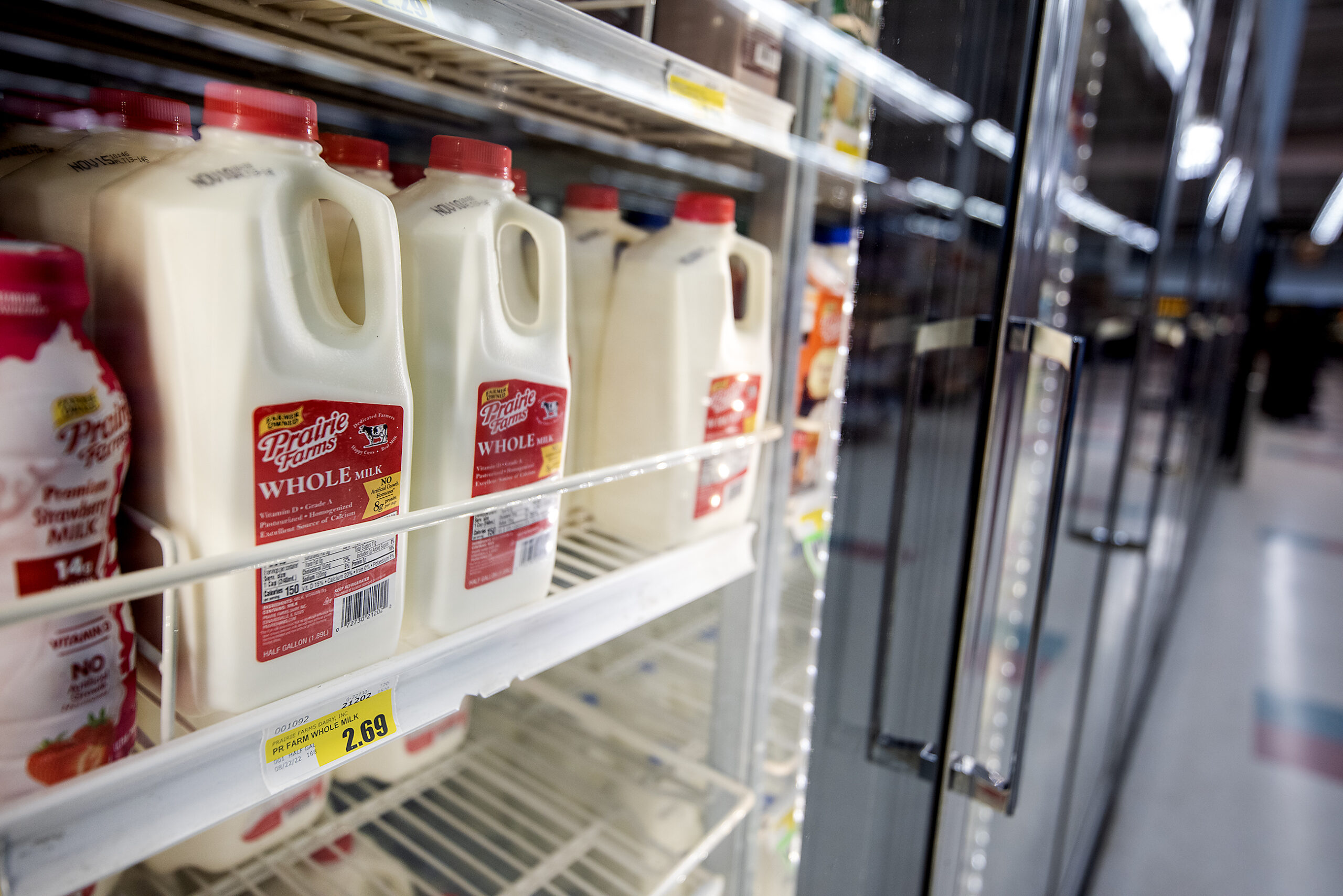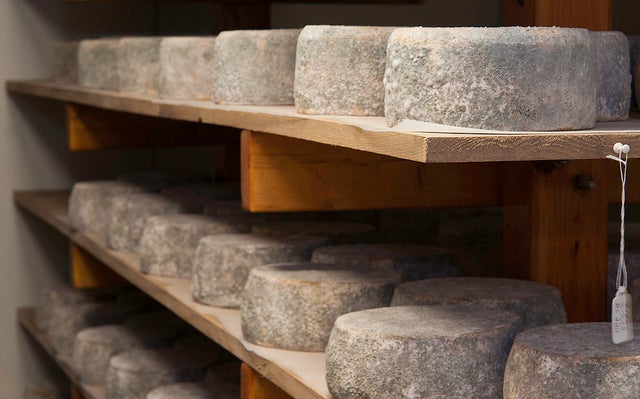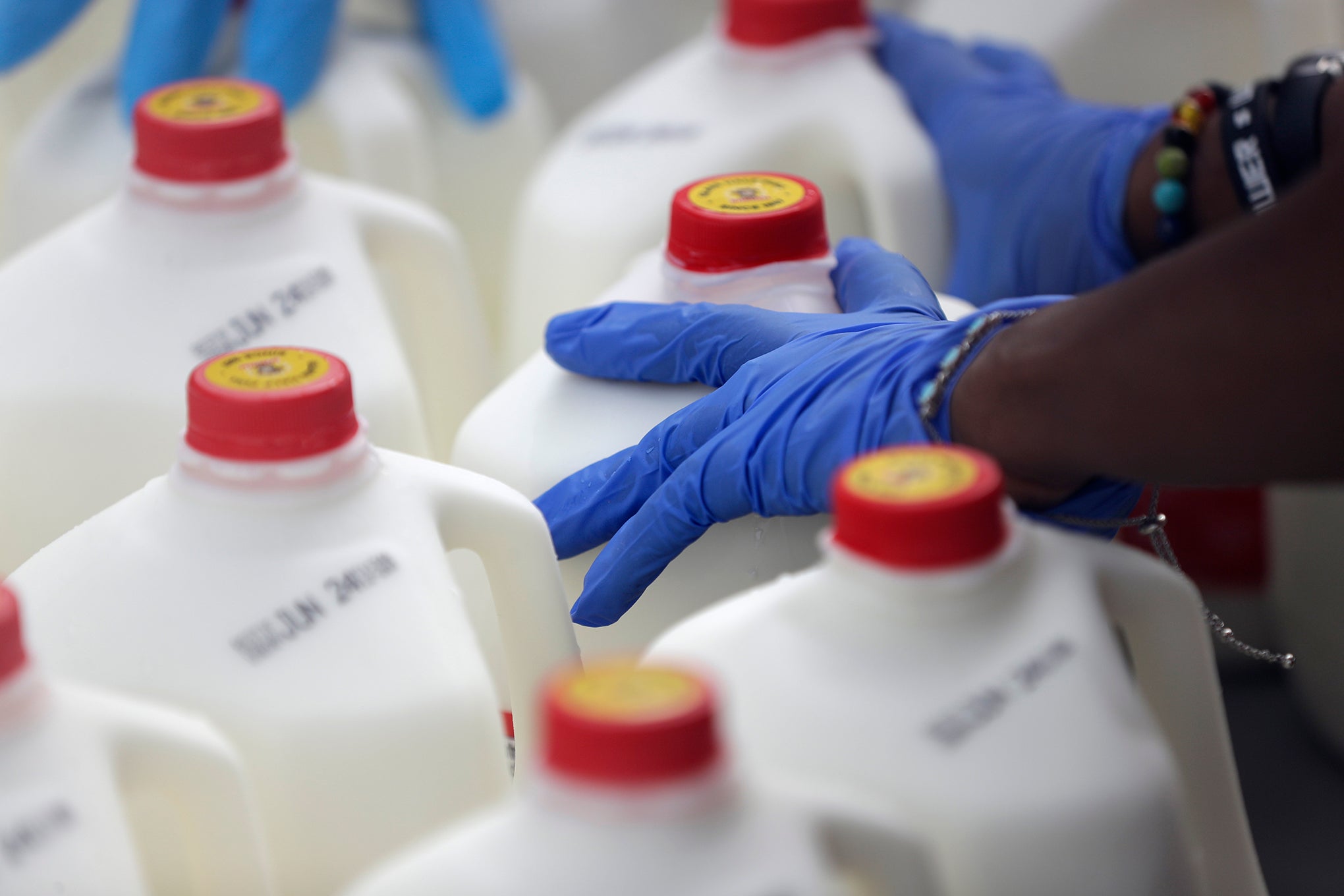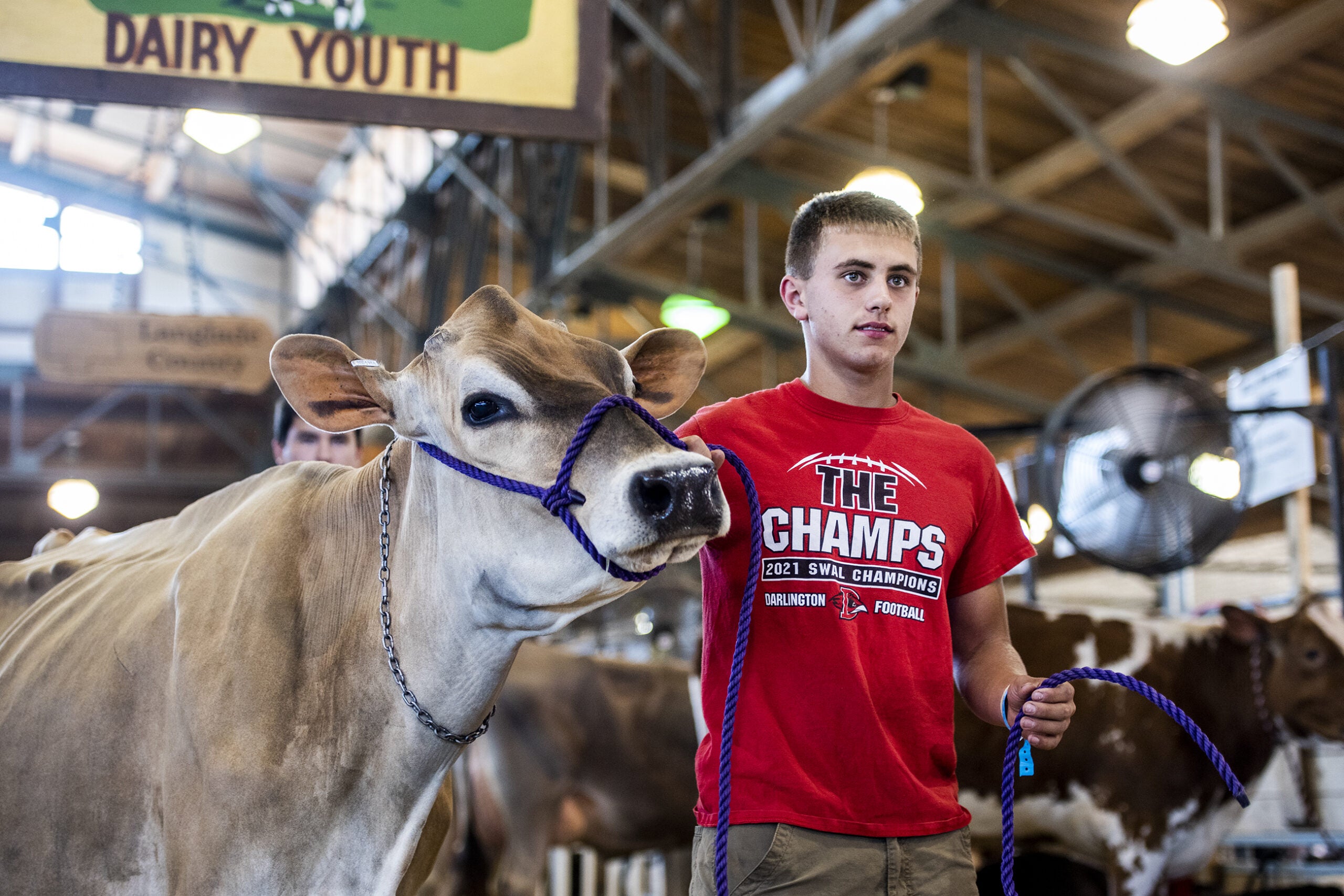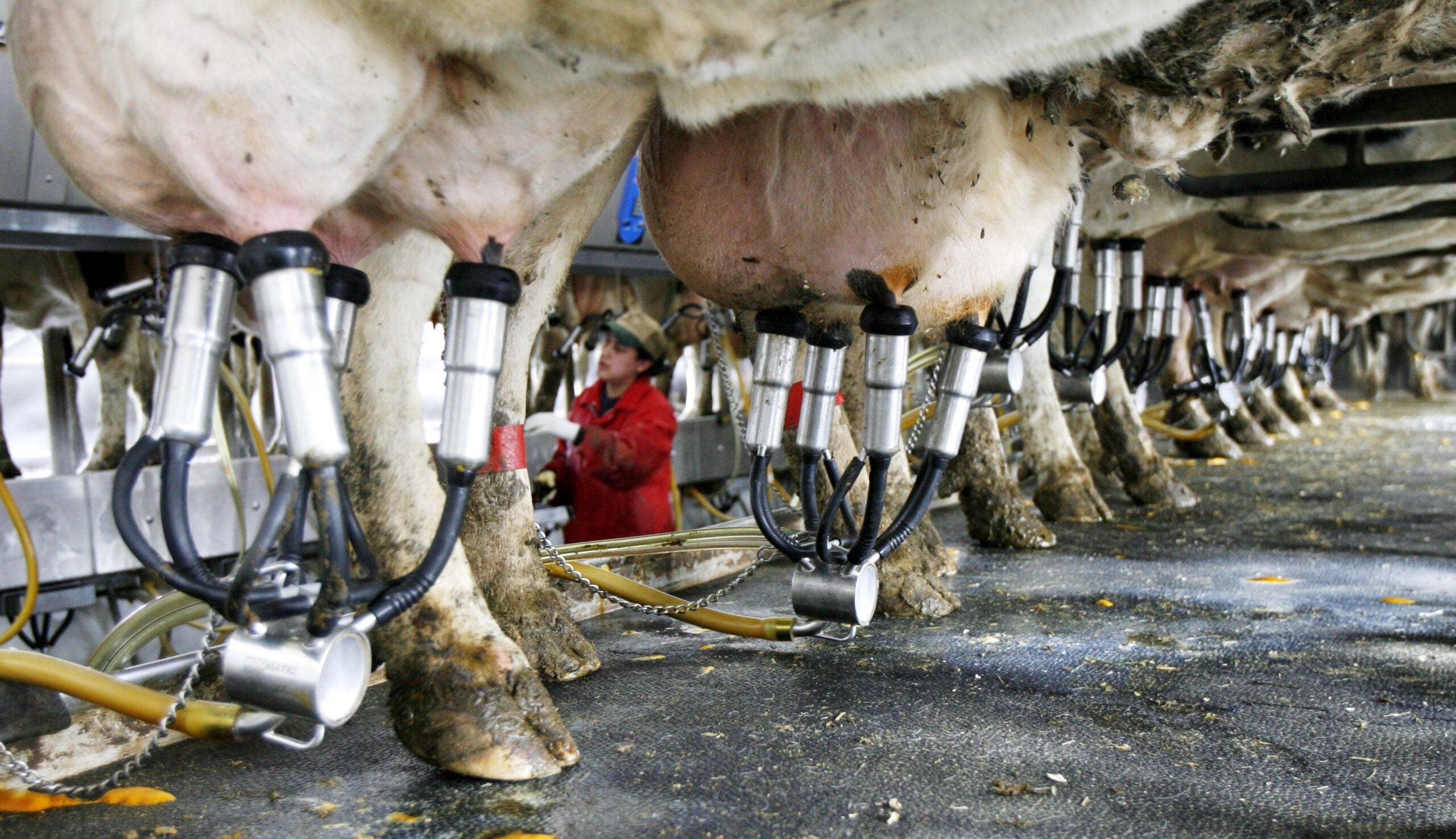At the Wisconsin Farm Bureau’s convention last month, delegates for the largest general farm organization in America’s Dairyland voted to support legalizing raw milk sales by farmers.
But public health authorities and dairy researchers are continuing to urge caution. They warn consuming raw milk remains too risky.
John Lucey is director of the Center for Dairy Research at the University of Wisconsin-Madison. He recently joined Wisconsin Public Radio’s “The Morning Show” to answer questions about the safety of unpasteurized milk. He emphasized the need to protect children.
News with a little more humanity
WPR’s “Wisconsin Today” newsletter keeps you connected to the state you love without feeling overwhelmed. No paywall. No agenda. No corporate filter.
“They are the ones who are often drinking it for their breakfast, as well. They’re more sensitive because their immune systems are not as well developed,” Lucey said. “That’s the thing that bothers me and keeps me up at night.”
Citing three studies, the Centers for Disease Control and Prevention says more foodborne illness outbreaks linked to unpasteurized milk happen in states where its sale is legal. Raw milk is mostly illegal to sell in Wisconsin under state law.
On “The Morning Show,” Lucey discussed Wisconsin’s laws for selling raw milk, the pasteurization process and how unpasteurized milk tastes.
The following was edited for clarity and brevity.
Kate Archer Kent: What separates raw milk from the milk someone buys at the store?
John Lucey: The primary (difference) about pasteurized milk and raw milk is the heat treatment that is given to the pasteurized milk. This is a legal requirement for a specific temperature and time. The most common one is about 161 degrees for 15 seconds. There are some other time (and) temperature combinations for things like cream and other products.
That heat treatment was selected over quite a bit of years of study in the last century (when) they were looking at what is the most heat-resistant human pathogen that might be found in milk.
Now, the pasteurization, I should point out, doesn’t kill every bacteria (in the) milk. The focus for pasteurization is only on pathogens — things that can cause us to get sick.
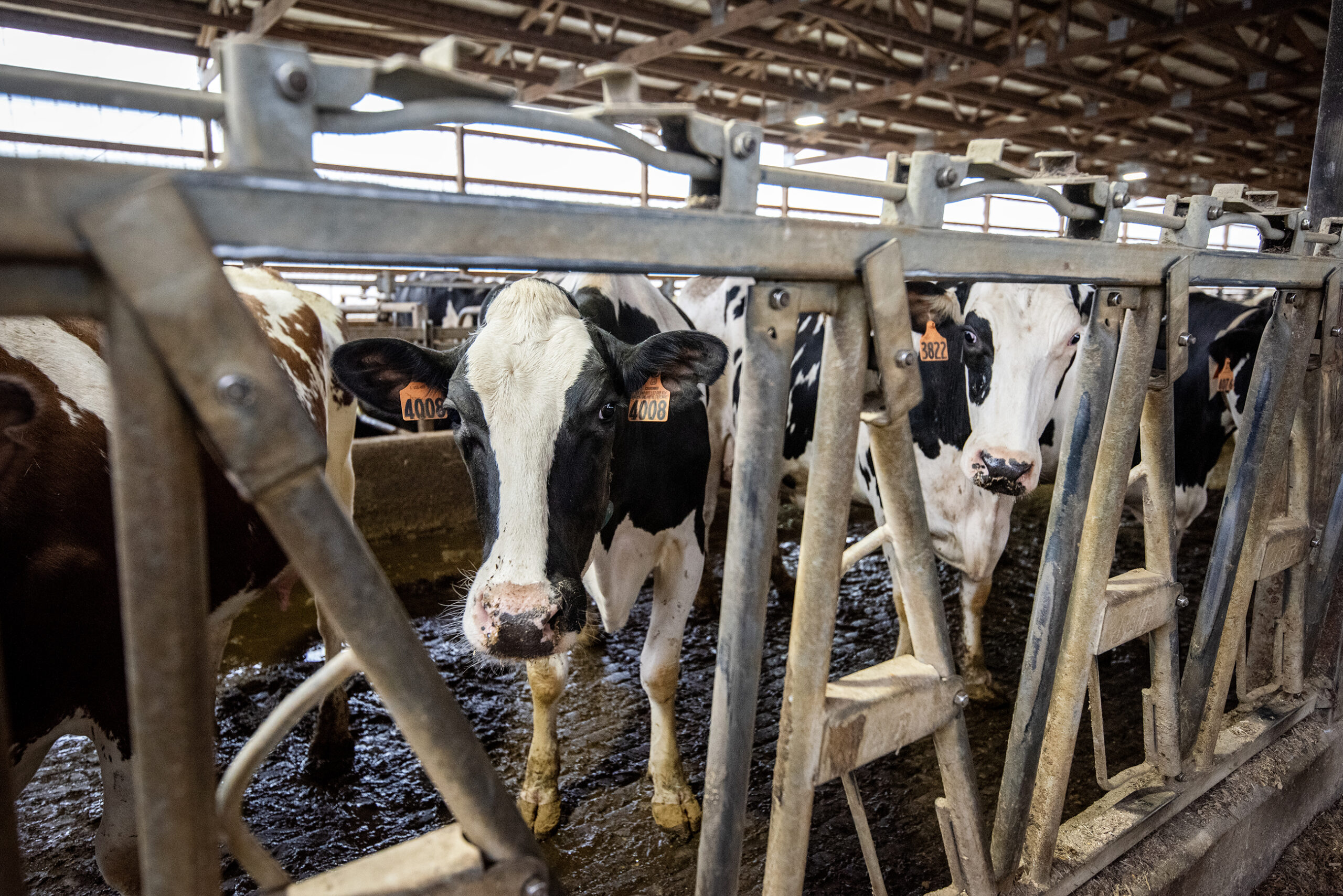
KAK: How does raw milk taste compared to pasteurized milk?
JL: If we had a blind test here and I had a lot of people testing raw and pasteurized milk, we wouldn’t be able to detect the difference between (them). I don’t think there’s any way for us to detect the fact that a heat treatment (happened).
Now, if we were dealing with something like boiled milk and if we’ve ever made boiled milk to drink before bed, you would notice that because that is a much more aggressive heat treatment. But the pasteurization has a relatively lower temperature in a shorter time. That isn’t enough to cause a taste difference to the public.
KAK: The sale or distribution of unpasteurized milk is illegal in Wisconsin. But there are exceptions for the incidental sale of raw milk directly to consumers at a farm. How do consumers know if a given farm sells raw milk?
JL: The regulatory environment across the whole U.S. is diverse and confusing. Some states completely ban it. Some have incidental sales. Some allow it relatively freely. Some allow internet sales. So, it is pretty confusing for the public to find out what they should be doing, where they can do it and whether it’s legal or not.
KAK: We heard from a listener in Viroqua who was curious about cattle brucellosis. What can you tell us about that?
JL: Historically, a large proportion of food-related diseases that humans contracted came from the consumption of milk from cows or close contact from cows or cattle. Brucellosis (and) tuberculosis were part of that.
We have done a great job here from the cattle side of things trying to eliminate some diseases or reduce the incidence of it. But there are still risks for contracting them from the consumption of raw milk. We’re fortunate that when we look at pasteurization, it is targeted to destroy the most heat-stable pathogen that is present in the milk. So, we’re always looking at that and saying what is another potential one out there that could be a risk to us and let’s make sure the heat treatment is killing it off.
Overseas, that is still a factor in some countries, because the cattle are in many parts of the world endemic for both brucellosis and tuberculosis.
KAK: When you look at CDC data, do more outbreaks related to raw dairy happen in states where it is legal to sell it?
JL: Yes, that’s correct. The funny thing about it, too — if you look at over the last 20 years and the studies (that) have (been) done, even in states where raw milk was illegal, there are outbreaks related to raw milk consumption. So, not everybody is following the rules, even in states where it’s illegal.
But yes, you are correct. That is the concerning thing for me as we think about expanding access to raw milk, that (it) will increase the (number) of outbreaks, the number of hospitalizations, and unfortunately, the likelihood of several deaths, as well.
Wisconsin Public Radio, © Copyright 2026, Board of Regents of the University of Wisconsin System and Wisconsin Educational Communications Board.
